MMC5000
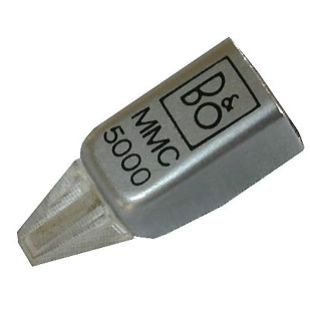
This was the cartridge specified for the Beogram 3400 and had a Shibata profile diamond. This is quite a rare cartridge to find these days as many 3400s did not have the CD4 decoder fitted and hence did not require this cartridge..

This was the cartridge specified for the Beogram 3400 and had a Shibata profile diamond. This is quite a rare cartridge to find these days as many 3400s did not have the CD4 decoder fitted and hence did not require this cartridge..
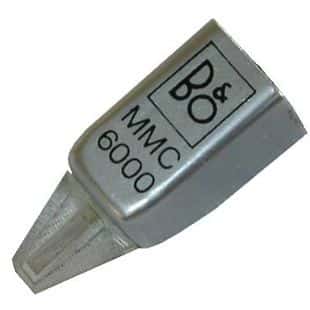
Bang & Olufsen’s (then) most accomplished pickup cartridge was fitted to Beogram 6000.
The MMC principle was adapted to track 4-channel records: both Quadradiscs and SQ. MMC 6000 would track both mono and stereo records with the utmost fidelity. It was designed for record-players with tangential arms. The stylus was the Pramanik diamond, named after its inventor: engineer S K Pramanik from Bang & Olufsen’s Laboratories.
The diamond’s radii were 7 um/2 x 50 um. It was a refinement of the elliptical shape, rather like the shape of the cutter-head, and enabled greater contact with the undulations of the record groove. The cantilever was made of berylium – a material which is harder yet lighter than popularly-used aluminium. Effective tip mass was 0.22 mg. Compliance was higher than 30×10-6 cm/dyne. Recommended- stylus pressure was 1g. The total frequency range was 20-45.000 Hz.
In the audible range: 20-15.000 Hz there is less than 1.5 dB variation and in the inaudible range 20,000-45,000 Hz where the carrier frequencies lie, the pick-up fulfils RCA/JVC’s specifications for a Class A discrete 4-channel pick-up cartridge. Each cartridge is an integrated, individually calibrated unit. The stylus unit is not separately replaceable since it is part of the integrated unit. An individual frequency response curve traced on a Bruel & Kjaer level recorder and a complete Calibration Card were enclosed with every MMC 6000 sold.
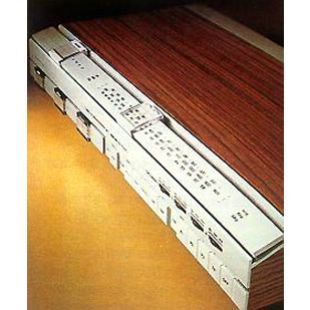
Beomaster 1500 was a compact combination of an AM/FM radio and a 2 x 25 watts RMS hi-fi amplifier. Four FM stations could be pre-set and tuning accuracy for all three wavebands was aided by an illuminated indicator and combined AFC/ST circuit. There were connections for a cassette deck, record player, headphones and two pairs of stereo speakers.
This was Bang & Olufsen’s smallest receiver (1979 – 80) but in terms of quality and performance data it matched their top model, Beomaster 4400 in many respects – thus offering the same high standards of electronic engineering to those who demand excellence but require less power and fewer facilities. Beomaster 1500 therefore represented extremely good value.
Beomaster 1500 could be made up as part of the Beosystem 1500 when linked together with other compatible Bang & Olufsen products.
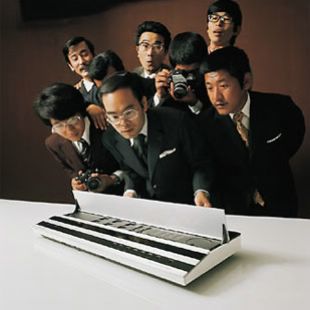
The 1970’s were exciting times for Bang & Olufsen. Another breakthrough during this decade was Beomaster 1900, a radio receiver and amplifier launched in 1976. Once again, design and operation differed dramatically from other contemporary products.
Originally designed by Jacob Jensen, Beomaster 1900, together with Beomaster 2400-2 were two advanced FM stereo receivers. They had identical technical specification and performance. Both were easy to use and easy to live with. Beomaster 2400-2 had the additional convenience of a cordless ultrasonic remote control module by which you could operate radio, amplifier and Beogram 2400 or 4004 record deck from a distance. Both receivers had touch-sensitive controls for operating the features and functions you used every day. All the secondary switches and adjustments were protected beneath a hinged lid, but an illuminated readout panel showed you the set’s operational status at a glance.
Beomaster 1900 boasted a powerful 2 x 30 watts RMS amplifier with distortion of less than 0,13%, five pre-set FM stations and comprehensive connection facilities. To operate it you simply touch the application “dimples” on the set’s front panel. The radio section had 4 pre-set stations which could be summoned at a touch and the phase-lock loop decoder provided excellent stereo separation even in difficult reception conditions The volume level could be pre-set at low, medium or high, and the music would always start at this level however much the volume control was altered last time the set was used.
The sets’ controls were divided into primary and secondary functions. The latter, which were less frequently used, were placed underneath the hinged aluminium panel where they were protected from dust and accidental movement.
A clear distinction was therefore made between the primary choice – accessible through a light touch – and the secondary choice, concealed under a lid hiding what the user did not need for daily use. At a stroke, what had been the norm for hi-fi in the past, with its macho grip and buttons, was eliminated. Instead, designer Jacob Jensen created a new design language, flat ‘flush-designed’ and electronically communicating, which did not target a few techno-freaks, but a much wider audience who wanted music rather than hi-fi equipment.
Beomaster 1900 had connections for two pairs of speakers, headphones, record player and cassette recorder. The receiver won the ID Award in 1976.
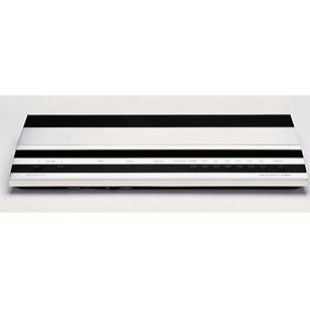
The 1970’s were exciting times for Bang & Olufsen. Another breakthrough during this decade was Beomaster 1900, a radio receiver and amplifier launched in 1976. Once again, design and operation differed dramatically from other contemporary products.
Originally designed by Jacob Jensen, Beomaster 1900, together with Beomaster 2400-2 were two advanced FM stereo receivers. They had identical technical specification and performance. Both were easy to use and easy to live with. Beomaster 2400-2 had the additional convenience of a cordless ultrasonic remote control module by which you could operate radio, amplifier and Beogram 2400 or 4004 record deck from a distance. Both receivers had touch-sensitive controls for operating the features and functions you used every day. All the secondary switches and adjustments were protected beneath a hinged lid, but an illuminated readout panel showed you the set’s operational status at a glance.
Beomaster 1900 boasted a powerful 2 x 30 watts RMS amplifier with distortion of less than 0,13%, five pre-set FM stations and comprehensive connection facilities. To operate it you simply touch the application “dimples” on the set’s front panel. The radio section had 4 pre-set stations which could be summoned at a touch and the phase-lock loop decoder provided excellent stereo separation even in difficult reception conditions The volume level could be pre-set at low, medium or high, and the music would always start at this level however much the volume control was altered last time the set was used.
The sets’ controls were divided into primary and secondary functions. The latter, which were less frequently used, were placed underneath the hinged aluminium panel where they were protected from dust and accidental movement.
A clear distinction was therefore made between the primary choice – accessible through a light touch – and the secondary choice, concealed under a lid hiding what the user did not need for daily use. At a stroke, what had been the norm for hi-fi in the past, with its macho grip and buttons, was eliminated. Instead, designer Jacob Jensen created a new design language, flat ‘flush-designed’ and electronically communicating, which did not target a few techno-freaks, but a much wider audience who wanted music rather than hi-fi equipment.
Beomaster 1900 had connections for two pairs of speakers, headphones, record player and cassette recorder. The receiver won the ID Award in 1976.

Beomaster 2200 was a 2 x 40 watts RMS FM/AM receiver with logical operation and high reliability.
Operation controls were separated into primary, secondary and tertiary functions. The primary functions – those you used every day – included programme selection, volume control and the off switch. They were easily accessible on the outside of the set. The secondary controls were under an aluminium panel. These included facilities for presetting 5 FM programmes; balance and tone controls; AFC (Automatic Frequency Control facility – which keeps stations properly tuned) and a mono/stereo switch. The tertiary functions, which were also hidden but easily accessible, were the connection sockets: you could make all connections for a record player, cassette deck, headphones and two pairs of speakers without moving the set.
Beomaster 2200 had a modular chassis. The modules were connected by wire-wrapping – a construction method that enhanced the product’s quality and reliability. This technique was originally adopted from computer production. The technique replaces conventional soldering, thereby eliminating any weaknesses arising from dry-joints, drop-outs and so on.
Volume adjustment was by means of a small slider along a numerical scale. Secondary controls included AFC (Automatic Frequency Control) coupled with silent tuning (AFC/ST), FM presetting dials for the radio, mono/stereo selection and loudspeaker switches.
These were all mounted beneath a hinged lid which opened when the PROGRAM panel was touched. A further compartment housed all the connection sockets which were easily accessible from the front of the unit. There was therefore a distinction between the functions which are frequently used, those that are used only once in a while, and those that would have been used a very few times during the set’s life.
The primary functions were for selecting the programme source, controlling volume and switching the set off – so these were the only controls that were on the outside of the set.
Beomaster 2200 could be made up as part of the Beosystem 2200, when linked together with other compatible Bang & Olufsen products.
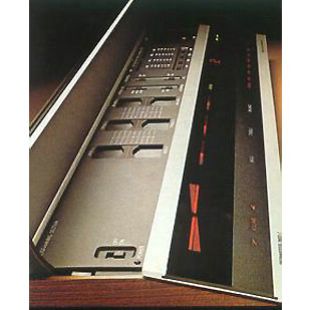
Beomaster 2400 together with Beomaster 1900 were two advanced FM stereo receivers. They had identical technical specification and performance. Both were easy to use and easy to live with.
Beomaster 2400 had the additional convenience of a cordless ultrasonic remote control module by which you could operate radio, amplifier and Beogram 2400 or 4004 record decks from a distance. Both receivers had touch-sensitive controls for operating the features and functions you used every day. All the secondary switches and adjustments were protected beneath a hinged lid, but an illuminated readout panel showed you the set’s operational status at a glance.
Equipped with the slim remote-control module you could select between four pre-set radio stations or record player input, adjust the volume up or down or put the System into Stand-by. The illuminated panel with its large display allowed to to easily see the state of play from anywhere in the room. The phase-locked loop decoder ensured a wide separation between stereo channels and remained stable over a very long lifetime. When a stereo broadcast was received, a symbol ‘S’ lit up automatically on the fascia of the set. Automatic Frequency Control (AFC) kept the selected radio station spot on tune, and a muting circuit cut out inter-station noise during tuning.
The stereo amplifier produced 2 x 30 watts RMS of high-fidelity output and had DIN sockets for the connection of two pairs of speakers, a record-player and a tape or cassette recorder.
A headphone connection was provided beneath the front edge of the unit. Controls not needed every day were situated beneath a hinged lid. These included tone and balance adjustment, FM pre-setting, loudness, AFC and MONO/STEREO switches, and a switch for selecting a basic initial volume level. This facility allowed you to choose the volume at which the amplifier began to play each time it was switch on – no matter how controls were left the previous time. On its primary control panel Beomaster 2400 had no knobs or buttons. The panel functioned electronically and needed only the contact of your finger to activate it. However, the ultrasonic remote control would have proved more useful. The set’s sophisticated indicator system would tell you instantly that your commands had been obeyed.
Beomaster 2400 was superceded by Beomaster 2400-2 in 1980.

Beomaster 2400 together with Beomaster 1900 were two advanced FM stereo receivers. They had identical technical specification and performance. Both were easy to use and easy to live with.
Beomaster 2400 had the additional convenience of a cordless ultrasonic remote control module by which you could operate radio, amplifier and Beogram 2400 or 4004 record decks from a distance. Both receivers had touch-sensitive controls for operating the features and functions you used every day. All the secondary switches and adjustments were protected beneath a hinged lid, but an illuminated readout panel showed you the set’s operational status at a glance.
Equipped with the slim remote-control module you could select between four pre-set radio stations or record player input, adjust the volume up or down or put the System into Stand-by. The illuminated panel with its large display allowed to to easily see the state of play from anywhere in the room. The phase-locked loop decoder ensured a wide separation between stereo channels and remained stable over a very long lifetime. When a stereo broadcast was received, a symbol ‘S’ lit up automatically on the fascia of the set. Automatic Frequency Control (AFC) kept the selected radio station spot on tune, and a muting circuit cut out inter-station noise during tuning.
The stereo amplifier produced 2 x 30 watts RMS of high-fidelity output and had DIN sockets for the connection of two pairs of speakers, a record-player and a tape or cassette recorder.
A headphone connection was provided beneath the front edge of the unit. Controls not needed every day were situated beneath a hinged lid. These included tone and balance adjustment, FM pre-setting, loudness, AFC and MONO/STEREO switches, and a switch for selecting a basic initial volume level. This facility allowed you to choose the volume at which the amplifier began to play each time it was switch on – no matter how controls were left the previous time. On its primary control panel Beomaster 2400 had no knobs or buttons. The panel functioned electronically and needed only the contact of your finger to activate it. However, the ultrasonic remote control would have proved more useful. The set’s sophisticated indicator system would tell you instantly that your commands had been obeyed.
Beomaster 2400 was superceded by Beomaster 2400-2 in 1980.
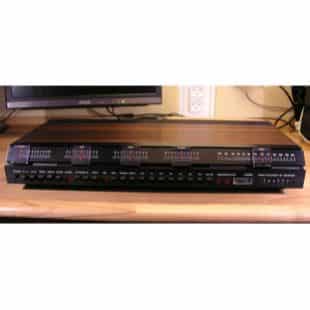
This was a variant of the Beomaster 4400 but which had a black fascia instead of the aluminium front seen on the Beomaster 4400. It seemed to be designed mainly for the US market but numbers made seem to be few and it has attained almost mythical status amongst European collectors. Bang & Olufsen themselves have not got one in their collection and in fact did not even have a picture.
However the enthusiast is not so easily thwarted! Thanks to the superb investigating powers of Frede Kristenssen of Classic Audio, we present the Beomaster 4401!
A more detailed description will follow once the model has been serviced, but essentially it has the same design and performance as the Beomaster 4400.
Two of these receivers are known to exist and examination would suggest that these were design studies taken to a production level. Some evidence of prototype wiring is present but clearly the parts are anodised in black.
Investigations have not completely uncovered the status of this model. There is one line of thinking which suggests that a number of these were made – in the region of a thousand with the majority going to the United States. However other insiders at B&O suggest that only a handful exist and it would seem that they are now in the hands of enthusiasts.
Reports of a matching Beogram , the 4001, are not backed up by any official data and unlike the Beomaster 4401, no service manual has yet been found.
In use the Beomaster 4401 is no different from a normal 4400. Except in this case the 4401 was restored by Classic Audio. This means that this Beomaster exceeds all the factory specifications.
How does it sound? Very modern despite it being over 30 years old. Lots of power and superb dynamics and extremely neutral. Many Beomasters have a warm slightly veiled sound but this one is a clear as a bell. It works equally well with small and large speakers and is easily able to control the bass on Beovox M100s which are a bit of a handful.
The tuner is a delight, pulling in weak stations with ease though the pre-sets are no easier to use than those on the Beomaster 3000. The geared wheels on the Beomaster 2200 are vastly better.
Connections are limited to DIN sockets – the useful RCA sockets are no longer there. This receiver also was the last to feature ambiophonics and a switch to activate the rear channels was fitted to the rear of the unit where most users would never see it!
In this users opinion, this is the best receiver made by B&O. The later Beomaster 8000 was more powerful but the 8000 is prone to going off specification very quickly due to the use of a particular type of capacitor. Therefore an 8000 in proper fettle is a rare beast indeed.
The 4400 is therefore a hidden gem; clothed in the skin of the lesser 3000 and 4000, it hides its splendour till called upon to play. Buy one now – these are true bargains!

Beocenter 2800 was a unique combination of FM/AM tuner, a 2 x 25 watts RMS hi-fi power amplifier and record player. The tuner section offered Long and Medium wave reception as well as FM. There were facilities for pre-setting the four FM stations you listen to most frequently. Ceramic filters, AFC, split-supply output and a phase-locked loop decoder were some of the features that ensured outstanding reception and reproduction of even distant stations.
The record player was fully automatic – one master switch controlled all operations. The anti-skating device was built into the arms suspension and worked automatically. Electronic Servo Drive (ESD) ensured constantly correct speed. There were sockets for tape deck, two sets of stereo speakers and headphones.
This was a compact, space-saving unit which was easy to use thanks to automatic circuits and logical controls. Beocenter 2800 could be made up as part of the Beosystem 2800, when linked together with other compatible Bang & Olufsen products